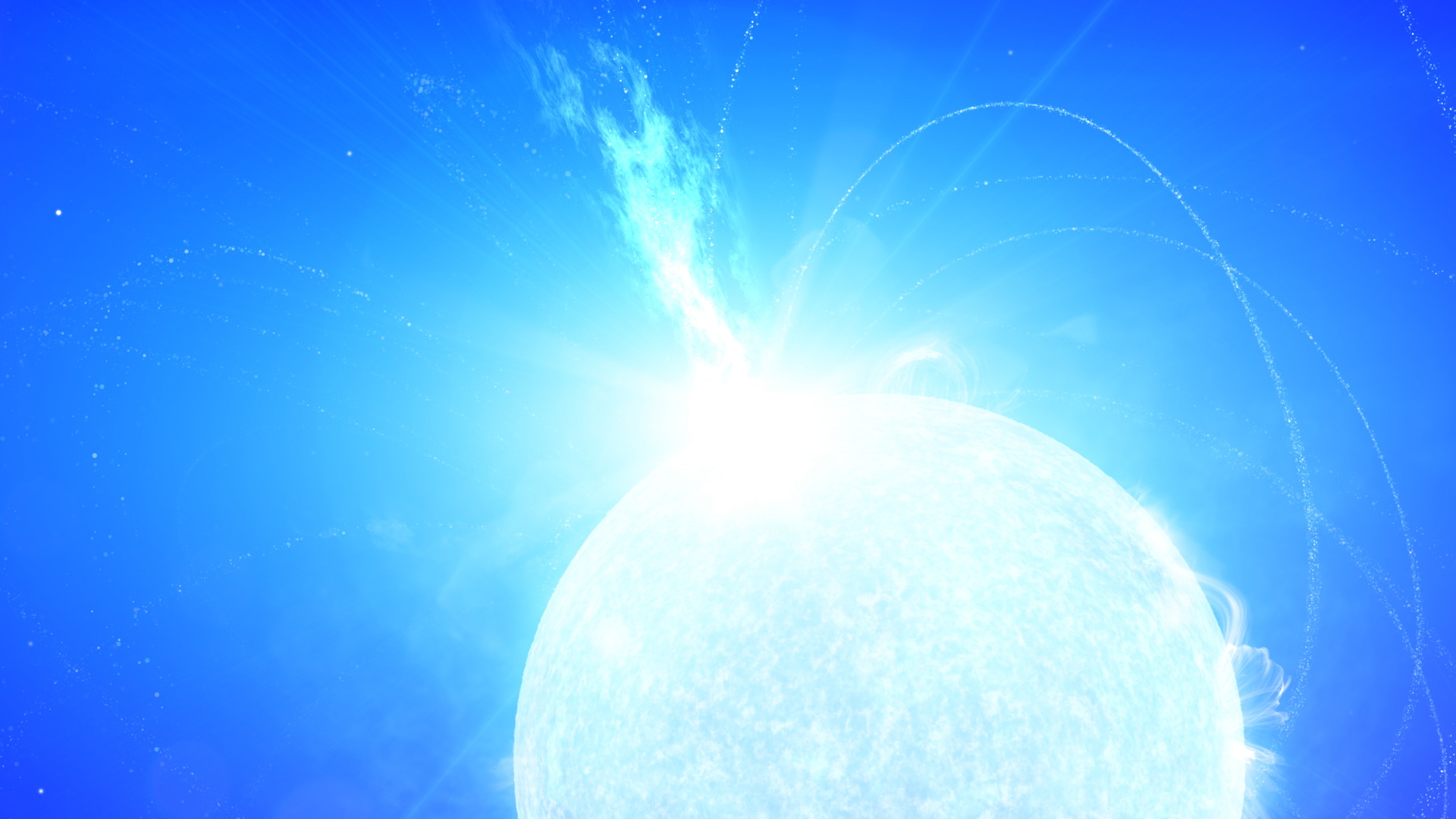NASA’s NICER Telescope Examined a Star on the Edge of Becoming a Black Hole Live Shots

Quick link to canned interview in Spanish with Diego Altamirano: Principal Research Fellow, University of Southampton.
Quick link to associated B-ROLL for live shots.
Have you ever wondered what it might be like inside a star that's twice as massive as the Sun, but only the size of a city? Thanks to observations from a NASA telescope, astronomers are now closer to understanding one of the hardest-to-reach places in the universe: the inner core of a star on the verge of becoming a black hole. These are neutron stars, a black hole’s smaller cousin and the leftovers of an exploded massive star. These objects seem to defy the laws of physics - they pack more mass than the Sun into something the size of a city, producing some of the most intense conditions known to exist. And, unlike black holes, we can actually see them.
These cosmic monsters are some of the most extreme objects known in the universe. Scientists recently studied the most massive neutron star discovered, which has more than twice the Sun’s mass but is only about 16 miles across – that’s not much bigger than Manhattan Island!
Scientists are unsure how matter, the material that makes up everything we can see and touch, behaves in neutron stars' mysterious interiors, which are home to conditions we can't recreate on Earth. Thanks to NASA's NICERtelescope, which collects data from its perch on the International Space Station, scientists are now a step closer to understanding these strange objects, which could harbor clues to how our universe works.
Chat one-on-one with NASA experts and members of the NICER team on Friday, April 30 from 6:00 a.m. - 1:00 p.m. EDT to tell your viewers about these bizarre cosmic objects
To Schedule an interview: Please fill out this formhttps://forms.gle/StUsX8aPXwTcKGHM7
Suggested Anchor intro:
Have you ever wondered what it's like inside something that's about to become a black hole? Astronomers now have a better idea thanks to NASA's NICER telescope on the International Space Station, which they use to study neutron stars, objects on the threshold of collapsing into black holes. Joining us today is NICER team member NAME to tell us more.
Suggested questions:
What is the difference between a black hole and a neutron star?
Why do we study neutron stars?
How do we study neutron stars?
Which do you think is cooler, black holes or neutron stars?
Where can our viewers go to learn more about neutron stars and NICER?
Questions for longer interviews:
What does matter look like inside a neutron star?
Why is NICER on the International Space Station?
What’s next for NICER?
Will our Sun become a neutron star?
Can we see any neutron stars in the night sky?
Canned interview in Spanish with Diego Altamirano: Principal Research Fellow, University of Southampton. TRT 7:40:20
B-Roll for NICER Live shots.
Credits
Please give credit for this item to:
NASA's Goddard Space Flight Center
-
Producers
- Michelle Handleman (USRA)
- Christina Brooke Mitchell (KBR Wyle Services, LLC)
- Courtney A. Lee (ADNET Systems, Inc.)
- Victoria Woodburn (GSFC Interns)
-
Technical support
- Aaron E. Lepsch (ADNET Systems, Inc.)
Release date
This page was originally published on Tuesday, April 27, 2021.
This page was last updated on Wednesday, May 3, 2023 at 1:44 PM EDT.






